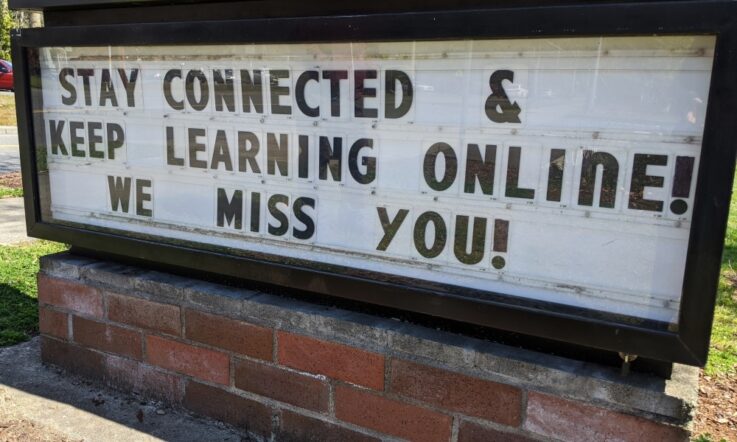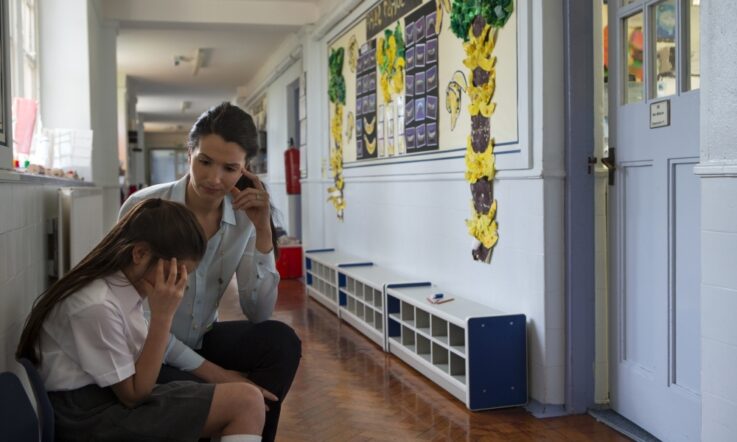Teachers and students who have spent the past two years working in pandemic conditions have demonstrated incredible resilience, agility and dedication to learning.
In Australia, COVID-19 has affected each state differently, but many school communities that grappled with lockdowns, school closures and remote learning ended 2021 with a sense of exhaustion.
As we approach the third year of the pandemic, it’s crucial that teachers and students have the opportunity to reset for the school year ahead.
This is not the time to rush in with an urgent effort aimed at ‘catching up’. It is a time to invest in wellbeing outcomes, because the academic outcomes won’t flow unless everyone is ready to teach and ready to learn.
The great news is that school leaders can help recharge their teams with the tools and strategies we use in trauma-informed, strengths-based classrooms.
Supporting teachers to reset
The Berry Street School is a specialist independent school for Years 7-12 operating across four campuses in Victoria (Ballarat, Morwell, Noble Park and Shepparton). Berry Street’s research indicates we can only grow into our wellbeing if we consciously acknowledge our unmet needs.
That is true for teachers as well as students, so a critical first step is to acknowledge the impacts of stress, vicarious stress, compassion fatigue and burnout on teachers. We need to recognise the impacts on our work when we struggle with the day-to-day speed bumps of our work, feel our compassion draining, and empathy fatigue setting in.
If you just try to minimise that, or push it away, then it’s going to keep popping up. Teachers benefit when they realise the impacts of secondary exposure to other people’s stress, not just the stress of their students, or the escalation of their students, but of the teachers and staff they work with.
The second step is to be able to identify what is happening within us as individual teachers or principals, our own escalation, shortness of breath, that feeling when your brain begins to catastrophise. In those moments, we need to be able to stop, take a breath, and get our focus back. That takes a lot of conscious thinking and a lot of planning. We have to rehearse regulating responses to daily stress.
School leaders can help by being proactive on three levels of teacher wellbeing. When principals provide this support, our research shows teachers feel renewed in their work, leading to reduced staff absenteeism, lower turnover, and increased job satisfaction (Brunzell et al., 2021).
The three areas to focus on are:
- Primary teacher wellbeing supports: These are the logistical things schools can do within the structures and rhythms of the school, including reflective practice for teachers, scheduling that is inclusive of teacher perspectives, and strengthening mechanisms in the school to lift barriers and distractions so that teachers can do what they love — which is teach.
- Secondary teacher wellbeing supports: This is about training teachers on the impacts of workplace stress and compassion fatigue—and providing them with knowledge and strategies to increase their wellbeing at work and extend that to other domains within their personal lives.
- Tertiary teacher wellbeing supports: This is targeted intervention for individuals on staff who would benefit from specific therapeutic supports.
Ensuring students are ready to learn
For students, it’s crucial to focus on establishing the rhythms and routines of community when school resumes. This might include morning community circles, or creating proactive strategies with students to help increase their focus and stamina for learning after the summer break.
Berry Street Education Model strategies focus on communities of classroom belonging. Creating classrooms with a sense of order, kindness, calmness and an emphasis on relationships means that teachers are able to work effectively with every student that comes into the classroom, including those that present with challenging behaviours, and students can begin to set higher expectations for themselves.
A top tip is to include trauma informed, strengths-based practices into instruction in the classroom, rather than relegating it to pastoral groups or wellbeing time. Every academic lesson is an opportunity to teach a wellbeing strategy too. For example: ‘Today, we are learning how to do double-digit multiplication AND we are learning to activate our strengths of curiosity and kindness to help others in your group.’
Students benefit when teachers have preemptively planned for deliberate re-entry routines. For example, teachers might consider:
- Ensuring you greet each student individually, provide them with a micro-moment of connection when you first see them.
- Establishing classroom routines of belonging, such as having them sit in a circle for a ‘classroom check-in’ conversation at the beginning of each day for the first days of school.
- Creating non-verbal ways for students to communicate with you (such as sticky notes, or journals designated for specific students that can be passed back and forth), particularly when they may need extra support to complete the task.
- Brainstorming with students: ‘Let’s determine strategies when you reach a speedbump when learning.’
Students will be nervous about ‘making mistakes’ – especially in front of new peers – so send a helpful message that ‘we value mistakes in this classroom because that’s how we grow’.
All students show resilience – and they show it in unique and individual ways. As we approach the challenges of a new year, we want to remind them that they have strengths that can shine through.
References
Brunzell, T., Waters, L., & Stokes, H. (2021). Trauma-informed Teacher Wellbeing: Teacher Reflections within Trauma-informed Positive Education. Australian Journal of Teacher Education, 46(5). http://dx.doi.org/10.14221/ajte.2021v46n5.6



